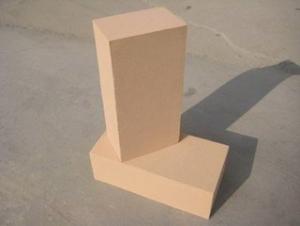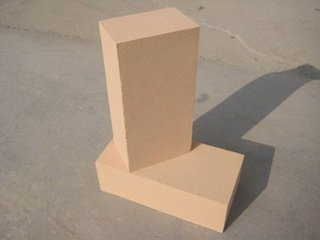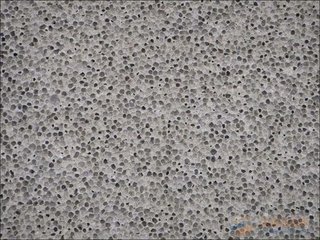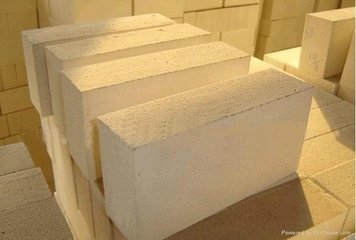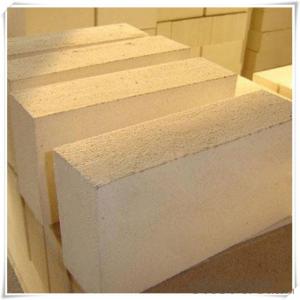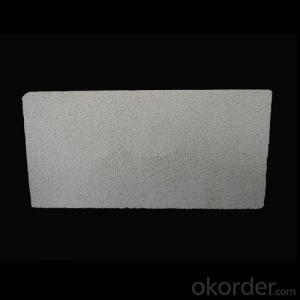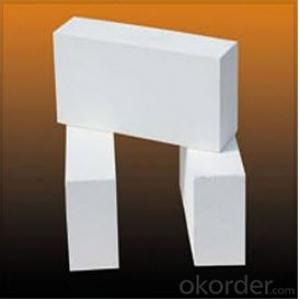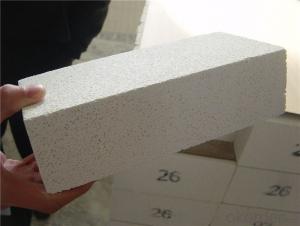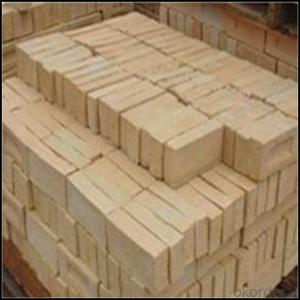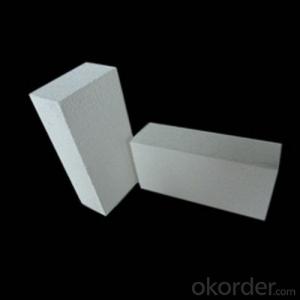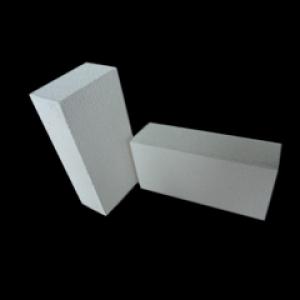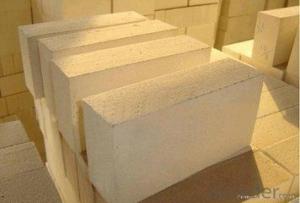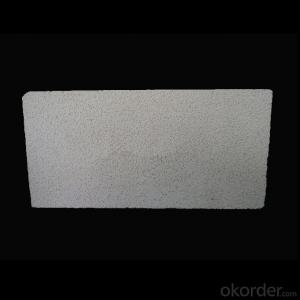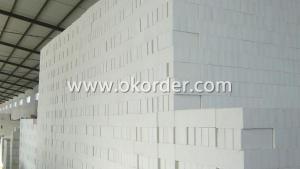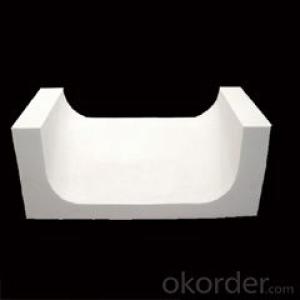High Quality Insulating Fire Bricks
- Loading Port:
- China Main Port
- Payment Terms:
- TT OR LC
- Min Order Qty:
- -
- Supply Capability:
- -
OKorder Service Pledge
OKorder Financial Service
You Might Also Like
1 brick insulation material
Thermal insulation brick is a kind of polymer material synthesis of a new type of materials used.
2 insulation brick is introduced
A, fully replace aluminous model board, honeycomb panel, curtain wall, such as common decoration materials, multi-functional integration, a construction can solve the heat preservation decoration two functional requirements, level off is smooth and beautiful adornment sex is strong.
2, high strength, good rigidity, light seismic and wind resistance, creep, superior performance, reduce building load and more economic and durable.
Three fire retardant, heat preservation and heat insulation, sound insulation, heat insulation, anti-cracking waterproof, according to 65% of building energy efficiency requirements for construction design.
Four Jin Anhua, easy installation and finishing products, process, shorten the construction period and quality easy to control.
Five, don't use aluminum, steel, keel support, set in the installation, reduce the gap between the insulation board and wall body.Increased security system.
Six, no radiation, green environmental protection, can be widely used in all kinds of public buildings and home interior decoration.
Seven, installed with cement, save a lot of material, manpower and time.Reduce the air pollution caused by production cement burning, accord with the requirement of green low carbon environmental protection.
Eight, more than 70 carrier lifetime, more than 20 years of decoration life for a long time, to adapt to a variety of areas such as zha climate and complex environment.With the quality of class international aluminous model board, aluminum veneer and steel hanging stone, compared to reduce bearing 30% to 90%
Nine, double efficacy, shorten time limit, the comprehensive cost declined from 30% to 70%.
- Q: Can insulating fire bricks be used for insulation in power boiler walls?
- Yes, insulating fire bricks can be used for insulation in power boiler walls. Insulating fire bricks are specifically designed to have low thermal conductivity, allowing them to effectively insulate high temperature environments such as power boilers. They are made from lightweight materials such as clay and other refractory materials, which provide excellent insulation properties while withstanding the extreme heat conditions found in power boilers. The use of insulating fire bricks in power boiler walls helps to reduce heat loss, improve energy efficiency, and maintain high operating temperatures within the boiler.
- Q: Can insulating fire bricks be used in the construction of glass fusing kilns?
- Indeed, glass fusing kilns can utilize insulating fire bricks. These bricks are specifically crafted to endure extreme temperatures and deliver exceptional insulation, rendering them fitting for kiln application. They aid in retaining heat and guaranteeing uniform distribution within the kiln, a critical component of the glass fusing procedure. Moreover, insulating fire bricks possess the advantages of being lightweight and long-lasting, making them an ideal choice for kiln construction. They effectively minimize heat loss, enhance energy efficiency, and uphold a steady temperature inside the kiln, all of which are pivotal factors for achieving successful glass fusing.
- Q: Are insulating fire bricks resistant to phosphorus pentoxide?
- Insulating fire bricks are generally not resistant to phosphorus pentoxide. Phosphorus pentoxide is a highly reactive compound that can corrode and degrade most materials, including insulating fire bricks. It is important to consider alternative materials or protective coatings if there is a need for resistance to phosphorus pentoxide in a specific application.
- Q: Can insulating fire bricks be used in the construction of coke ovens?
- Yes, insulating fire bricks can be used in the construction of coke ovens. Insulating fire bricks are specially designed to withstand high temperatures and provide excellent thermal insulation. Coke ovens operate at extremely high temperatures, typically around 2000 degrees Fahrenheit, and require materials that can withstand these conditions. Insulating fire bricks have low thermal conductivity, which means they can effectively prevent heat transfer between the oven's interior and exterior. This helps to maintain the high temperatures required for the carbonization of coal in the coke oven, while also minimizing heat loss. Furthermore, insulating fire bricks are lightweight and have high strength, making them ideal for use in the construction of coke ovens. Their lightweight nature allows for easier installation and reduces the overall weight of the structure. Their high strength ensures that they can withstand the harsh operating conditions of the coke oven without cracking or crumbling. In summary, insulating fire bricks are a suitable choice for the construction of coke ovens due to their ability to withstand high temperatures, provide thermal insulation, and offer durability.
- Q: Are insulating fire bricks lightweight or heavy?
- Insulating fire bricks are lightweight. These bricks are specifically designed to have low density and high insulating properties. They are made from lightweight materials such as expanded clay, perlite, and vermiculite, which contribute to their lightweight nature. This makes them easier to handle and install compared to traditional heavy fire bricks. However, despite being lightweight, insulating fire bricks still offer excellent thermal insulation, making them ideal for various applications including kilns, furnaces, and fireplaces.
- Q: Can insulating fire bricks be used in the construction of heat storage systems?
- Yes, insulating fire bricks can be used in the construction of heat storage systems. Insulating fire bricks are designed to have low thermal conductivity, which allows them to effectively retain and store heat. This makes them suitable for use in heat storage systems where the goal is to store and release heat over a period of time.
- Q: Can insulating fire bricks be used for insulation in aluminum smelters?
- Yes, insulating fire bricks can be used for insulation in aluminum smelters. Insulating fire bricks are made from special lightweight materials that have high insulating properties, making them ideal for applications that require high-temperature insulation. Aluminum smelters operate at extremely high temperatures, and insulating fire bricks can effectively withstand and retain the heat, preventing heat loss and improving energy efficiency. Additionally, these bricks are resistant to thermal shock, a common occurrence in smelting processes, which makes them highly suitable for use in aluminum smelters. Insulating fire bricks can also provide a protective barrier, reducing the risk of heat damage to the surrounding structures and equipment. Therefore, using insulating fire bricks for insulation in aluminum smelters can enhance thermal efficiency, reduce energy consumption, and ensure a safe and efficient smelting process.
- Q: Can insulating fire bricks be used in contact with molten metal?
- Indeed, it is possible to utilize insulating fire bricks in direct contact with molten metal. Specifically engineered to endure extreme temperatures, these bricks are widely employed in industrial settings where they encounter molten metal. With their exceptional resistance to thermal shock, they are capable of withstanding the intense heat generated by molten metal. Furthermore, insulating fire bricks possess low thermal conductivity, thereby reducing heat loss and enhancing energy efficiency. However, it is crucial to ascertain that the specific variant of insulating fire brick employed is suitable for the specific type of molten metal and temperature range it will be exposed to. Different metals possess varying melting points, which may necessitate the use of more specialized refractory materials.
- Q: Can insulating fire bricks be used for insulation in oil refineries?
- Yes, insulating fire bricks can be used for insulation in oil refineries. Insulating fire bricks are designed to withstand high temperatures and provide excellent thermal insulation. They are made from lightweight refractory materials that have low thermal conductivity, allowing them to effectively minimize heat transfer. In oil refineries, where high temperatures and heat transfer are common, insulating fire bricks can be used to insulate various components such as furnaces, reactors, and pipelines. By using insulating fire bricks, the heat loss can be significantly reduced, improving energy efficiency and reducing operational costs in oil refineries.
- Q: Are insulating fire bricks porous?
- Yes, insulating fire bricks are porous. Porosity is a characteristic of insulating fire bricks that allows them to have low thermal conductivity. These bricks are made from ceramic materials and contain a high percentage of tiny air pockets or voids, which trap and slow down the transfer of heat. This porosity also makes the bricks lightweight and resistant to thermal shock. The ability of the insulating fire bricks to retain heat and provide effective insulation is directly linked to their porous structure.
Send your message to us
High Quality Insulating Fire Bricks
- Loading Port:
- China Main Port
- Payment Terms:
- TT OR LC
- Min Order Qty:
- -
- Supply Capability:
- -
OKorder Service Pledge
OKorder Financial Service
Similar products
Hot products
Hot Searches
Related keywords
